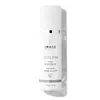What's inside
What's inside
 Key Ingredients
Key Ingredients

 Benefits
Benefits

 Concerns
Concerns

 Ingredients Side-by-side
Ingredients Side-by-side

Water
Skin ConditioningIsododecane
EmollientCetearyl Olivate
Cetyl Alcohol
EmollientNeopentyl Glycol Dicaprylate/Dicaprate
EmollientCaprylic/Capric Triglyceride
MaskingCitrus Aurantium Dulcis Peel Oil
MaskingSorbitan Olivate
EmulsifyingLimonene
PerfumingStearic Acid
CleansingGlyceryl Stearate
EmollientPEG-100 Stearate
Coco-Caprylate/Caprate
EmollientDecyl Glucoside
CleansingGlycereth-26
HumectantC10-16 Alkyl Glucoside
EmulsifyingGlycerin
HumectantXanthan Gum
EmulsifyingMagnesium Aluminum Silicate
AbsorbentEthylhexylglycerin
Skin ConditioningEugenia Caryophyllus Leaf Oil
MaskingRetinyl Palmitate
Skin ConditioningSodium Ascorbyl Phosphate
AntioxidantButylene Glycol
HumectantTocopheryl Acetate
AntioxidantYeast Polysaccharides
Skin ConditioningSodium Hydroxide
BufferingAscorbyl Palmitate
AntioxidantTocopherol
AntioxidantVitis Vinifera Seed Extract
AntimicrobialAlchemilla Vulgaris Extract
AstringentSaponaria Officinalis Leaf/Root Extract
Skin ConditioningPentylene Glycol
Skin ConditioningTromethamine
BufferingSuperoxide Dismutase
AntioxidantPhenoxyethanol
PreservativeEugenol
PerfumingWater, Isododecane, Cetearyl Olivate, Cetyl Alcohol, Neopentyl Glycol Dicaprylate/Dicaprate, Caprylic/Capric Triglyceride, Citrus Aurantium Dulcis Peel Oil, Sorbitan Olivate, Limonene, Stearic Acid, Glyceryl Stearate, PEG-100 Stearate, Coco-Caprylate/Caprate, Decyl Glucoside, Glycereth-26, C10-16 Alkyl Glucoside, Glycerin, Xanthan Gum, Magnesium Aluminum Silicate, Ethylhexylglycerin, Eugenia Caryophyllus Leaf Oil, Retinyl Palmitate, Sodium Ascorbyl Phosphate, Butylene Glycol, Tocopheryl Acetate, Yeast Polysaccharides, Sodium Hydroxide, Ascorbyl Palmitate, Tocopherol, Vitis Vinifera Seed Extract, Alchemilla Vulgaris Extract, Saponaria Officinalis Leaf/Root Extract, Pentylene Glycol, Tromethamine, Superoxide Dismutase, Phenoxyethanol, Eugenol
Water
Skin ConditioningGlycolic Acid
BufferingAmmonium Laureth Sulfate
CleansingAmmonium Lauryl Sulfate
CleansingAmmonium Hydroxide
BufferingGlycerin
HumectantCocamidopropyl Hydroxysultaine
CleansingPhenoxyethanol
PreservativeGlycol Distearate
EmollientLaureth-10
EmulsifyingCaprylyl Glycol
EmollientAmmonium Sulfate
Ammonium Chloride
BufferingMenthol
MaskingAloe Barbadensis Leaf Juice
Skin ConditioningEthylhexylglycerin
Skin ConditioningHexylene Glycol
EmulsifyingHydroxypropyl Methylcellulose
Emulsion StabilisingSodium Benzoate
MaskingSodium Chloride
MaskingGlyoxal
AntimicrobialRosmarinus Officinalis Leaf Extract
AntimicrobialWater, Glycolic Acid, Ammonium Laureth Sulfate, Ammonium Lauryl Sulfate, Ammonium Hydroxide, Glycerin, Cocamidopropyl Hydroxysultaine, Phenoxyethanol, Glycol Distearate, Laureth-10, Caprylyl Glycol, Ammonium Sulfate, Ammonium Chloride, Menthol, Aloe Barbadensis Leaf Juice, Ethylhexylglycerin, Hexylene Glycol, Hydroxypropyl Methylcellulose, Sodium Benzoate, Sodium Chloride, Glyoxal, Rosmarinus Officinalis Leaf Extract
Ingredients Explained
These ingredients are found in both products.
Ingredients higher up in an ingredient list are typically present in a larger amount.
Ethylhexylglycerin (we can't pronounce this either) is commonly used as a preservative and skin softener. It is derived from glyceryl.
You might see Ethylhexylglycerin often paired with other preservatives such as phenoxyethanol. Ethylhexylglycerin has been found to increase the effectiveness of these other preservatives.
Glycerin is already naturally found in your skin. It helps moisturize and protect your skin.
A study from 2016 found glycerin to be more effective as a humectant than AHAs and hyaluronic acid.
As a humectant, it helps the skin stay hydrated by pulling moisture to your skin. The low molecular weight of glycerin allows it to pull moisture into the deeper layers of your skin.
Hydrated skin improves your skin barrier; Your skin barrier helps protect against irritants and bacteria.
Glycerin has also been found to have antimicrobial and antiviral properties. Due to these properties, glycerin is often used in wound and burn treatments.
In cosmetics, glycerin is usually derived from plants such as soybean or palm. However, it can also be sourced from animals, such as tallow or animal fat.
This ingredient is organic, colorless, odorless, and non-toxic.
Glycerin is the name for this ingredient in American English. British English uses Glycerol/Glycerine.
Learn more about GlycerinPhenoxyethanol is a preservative that has germicide, antimicrobial, and aromatic properties. Studies show that phenoxyethanol can prevent microbial growth. By itself, it has a scent that is similar to that of a rose.
It's often used in formulations along with Caprylyl Glycol to preserve the shelf life of products.
Water. It's the most common cosmetic ingredient of all. You'll usually see it at the top of ingredient lists, meaning that it makes up the largest part of the product.
So why is it so popular? Water most often acts as a solvent - this means that it helps dissolve other ingredients into the formulation.
You'll also recognize water as that liquid we all need to stay alive. If you see this, drink a glass of water. Stay hydrated!
Learn more about Water